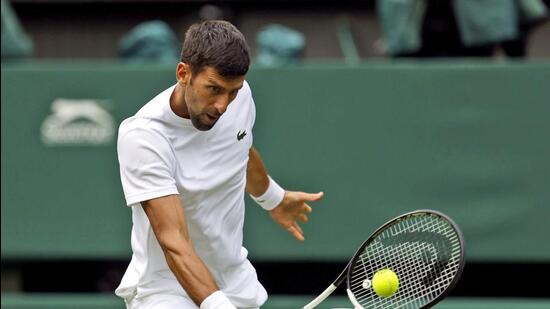Who transitioned the best from clay to grass in modern tennis?
Since the Open Era of tennis began in 1968, only a handful of modern greats, men and women, have done equally well in both these majors separated in time by a month and in character by a whole lot more.
New Delhi: “Grass is for cows,” said Ivan Lendl, walking away from Wimbledon in 1982. Eventually, he came around, such is the magnetism and challenge of this now-145-year-old tennis tournament. Wimbledon became Lendl’s agonising and theatrical final frontier. He learnt to serve and volley. He hired Australian great Tony Roche to refine his grass court play. But the winner of eight grand slams, including three French Opens on clay, never won Wimbledon.

Lendl is not the first, and won’t be the last, to battle the challenging transition from the slow clay of the French Open to the fast grass of Wimbledon. Since the Open Era of tennis began in 1968, only a handful of modern greats, men and women, have done equally well in both these majors separated in time by a month and in character by a whole lot more.
Where Chris Evert scores above Rafael Nadal
To analyse how players transitioned, we designed a points system to quantify their performance in each of the two tournaments, with an emphasis on rewarding players progressing deep. This is outlined in the note for Chart 1, which shows how the top 10 men and women on this points system have fared. In this graphic, what we are looking for is the line for a player to be as long as possible, and for the points to be divided equally between the two tournaments.
Across men and women, the player who does the best on both those counts is Chris Evert. The American, a leading light in the 1970s and 1980s, won the French Open seven times and Wimbledon three times. In terms of total points accumulated, she leads Rafael Nadal by four points, with an identical number of tournaments played. She also stands out in having a more equal distribution of performance, as compared to Nadal, who draws about three-fourths of his points from the French Open. Similar is the case with the second-ranked players on both lists: Martina Navratilova and Roger Federer, both of whom have been stellar on grass, less so on clay.
There are players among both men and women whose performance in these two majors also has a strong element of longevity. Among men, besides Nadal and Federer, there is also Novak Djokovic. Among women, besides Evert and Navratilova, there are also Steffi Graf and Serena Williams. Then, there are players who had relatively shorter careers, but were strong in both these majors. Notably, Bjorn Borg and Lendl, though the latter never won Wimbledon in spite of some strong and consistent runs.
[Chart 1]
Where Borg is a cut above in the clay-grass matrix
In order to adjust for longevity, we looked at points per tournament for this set of 20 players. In our points system, the maximum points a player can take from a tournament is 32. Thus, we were looking for players to score high on this count in both the French Open and Wimbledon. Graphically, in the Chart 2 scatterplot, the players who are on the top-right quadrant are the ones who fared the best in making the transition from the French Open to Wimbledon.
There are three players in this zone. Two of them are women, Chris Evert and Steffi Graf. But above them in winnability and clay-to-grass transition is Bjorn Borg, who announced a shock retirement at just 26 years of age after winning 11 Grand Slams. In points per tournament, the Swede is higher than Federer at Wimbledon and he almost matches Nadal at the French Open. Borg is the only male player, besides Federer, to appear in four consecutive French Open and Wimbledon finals, and is the only man to win both in the same year thrice (1978-80).
[Chart 2]
Where Steffi Graf shines through in the clay to grass transition
Another way to assess successful clay to grass transitions at the top is to look at the number of years where players have progressed deep (quarter-finals and more) in both the French Open and Wimbledon in the same year. Among men, the triumvirate Djokovic, Nadal and Federer show their dominance of the last two decades as well as in the history of tennis, with Djokovic a shade above. Contrast this with Pete Sampras, who follows them on Grand Slam count, but never won the quarter-finals at both majors in the same year.
The triumvirate is bettered by two women players: Chris Evert and Steffi Graf. Evert won both quarter-finals 11 times, and won the corresponding semi-finals six times. Steffi Graf won both quarter-finals 10 times and the semi-finals eight semis. She also won both the French Open and Wimbledon in the same year four times, the most among all players in this set.
[Chart 3]
howindialives.com is a database and search engine for public data





